With the phenomenal popularity of Black Myth: Wukong, there has been a wave of voices in the circle that are pessimistic about Web3 games, adding another layer of debuff to the market environment that has been very depressed and self-doubting recently.
Do Web3 people not love games? It is true that in the early bubble stage of the market, a strong speculative atmosphere is inevitable, but many builders still rush into this industry with the intention of making a good game, a game that truly belongs to players. If Web3 wants to achieve true mass adoption, games are an inevitable path that can penetrate the lower-tier markets.
But the reality is harsh. When people want to count the first-line games in Web3, they find that there are very few high-quality games. Most of the games are mediocre, neither providing players with a good user experience nor meeting the expectations of mass adoption. A large number of game teams with successful practical experience in Web2 have failed in Web3. I currently understand that there are two main reasons:
1. Compared with traditional games, it is difficult for Web3 games to provide continuous game content updates
2. Due to different audiences, Web3 games need to consider more game economics issues beyond gameplay than traditional games
The dilemma of updating game content
If a game wants to maintain long-term vitality, updates and patches are essential; otherwise, bugs cannot be fixed and players’ sense of freshness will not last long. In traditional game development, if the data structure does not change but the game logic does, a simple program logic patch can complete the relevant upgrade.
However, the immutability of blockchain makes this seemingly simple implementation more difficult. Taking Solidity game development as an example, a game contract that is launched online often determines the overall data structure of the game. Since the game logic itself is the migration of data status, the modification of the game logic often requires the upgrade of the contract.
After the contract is upgraded, the data of the contract before the upgrade cannot be reused continuously. In order to complete the upgrade of the game logic, there are only two options:
1 Migration
2. Separate the data layer from the logic layer at the beginning of contract design
The second option will increase the gas consumption of contract calls, so high-frequency game content upgrades are often difficult to achieve in Web3, which hurts the continued customer acquisition ability of a potential game.
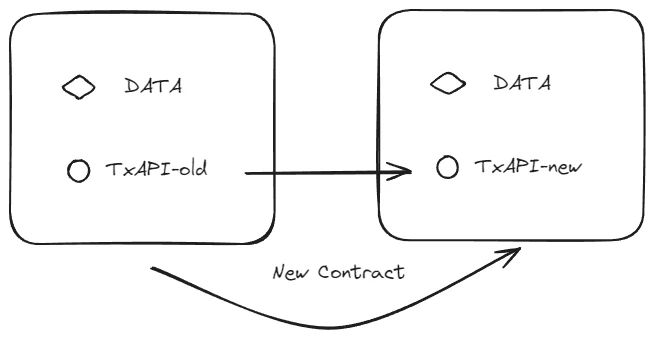
No logical upgrade of data interface
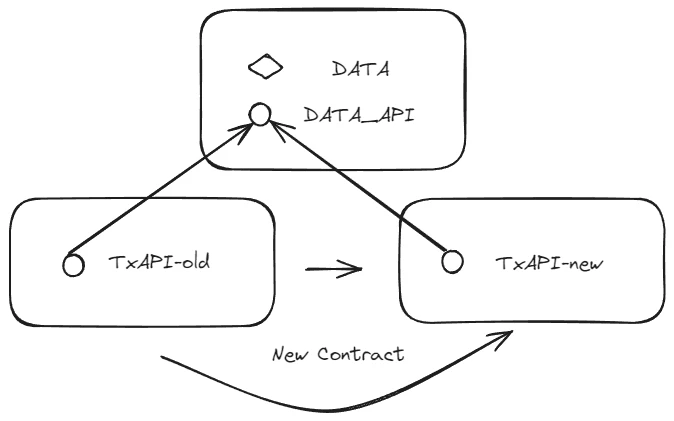
Made a logical upgrade of the data interface
To solve this problem, we first need to solve the data reuse and data upgrade problems. When the game logic is modified, we still hope that the original data can be retained intact. The best zero-cost solution here is an independent App As A rollup. Because in the App rollup, the Merkle root of the original data can be directly reused, and the modification of the logic only needs to be reflected in the code logic.
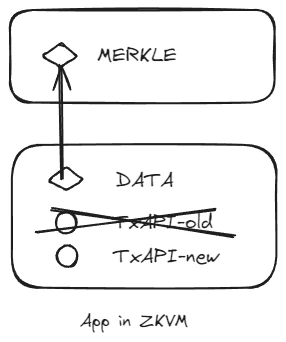
Logical upgrades running directly in the virtual machine
After the data reuse and logic upgrade issues are resolved, the data structure upgrade issue will still bring certain challenges to game upgrades. Ordinary on-chain data migration often requires an oracle to modify the data according to a predetermined script and then re-enter it on the chain, which takes a lot of time.
In the App As A rollup architecture, after the data migration is audited, it can be run in zkVM, so that the migration logic is fully verifiable. Since data migration is data reorganization in many scenarios, the calculation logic is relatively small. If the code involved in the reorganization of each leaf node is about 1,000 lines, then the execution trace required for more than one million leaf nodes can be about 1,000* 100w. At present, the proof time of one million lines of trace for ordinary zkVM is 9-15 seconds, so the overall zk data migration time is still a controllable number.
It is precisely because of the data independence of Application Rookup that a new methodology is brought to the iteration of Web3 game content.
Since the complexity of other on-chain apps and the urgency of updating are far less than those of games, zkVM will bring new opportunities for full-chain games, or verifiable games.
The Dilemma of Economics and Benefit Distribution
Game project development is a complex, comprehensive and very tedious task. If a high-quality game cannot bring tangible economic benefits, then Web3 will become less attractive to developers than the traditional game field.
At present, the relationship between game projects and public chains is often based on traffic, supplemented by revenue. In the traffic relationship, game projects often rely on the platform traffic and initial traffic provided by the public chain, while the public chain absorbs good game projects and enjoys the increase in public chain users brought by the game in the mid-term of the game launch.
The revenue relationship will be more complicated and hide deeper interest distribution issues: on the one hand, user behavior will generate revenue, including chain gas revenue and game content consumption charges; on the other hand, game traffic and consumption bring about currency price appreciation, and games with trading volume generate asset income by issuing game tokens, which also brings a prosperous ecological effect to the chain, further increasing the valuation expectations of public chain tokens.

Under this complex relationship of interests, how to allocate users actual expenditures reasonably is far from a clear definition. The cold start of the game requires a lot of funds, and the first income of users is often based on the gas rate paid to the chain, which makes the cycle of positive feedback for game creators very long. Sometimes there is even a situation where the game development team brushes the volume to reach the basic value of the chains DAU by itself, and then relies on meager grants to recover blood. This forces the game to rely on token expectations in the early stage to attract players to pay gas for interaction. This part of the gas burden can no longer be ignored for a game player, so that chain games are more difficult than traditional games in guiding users to consume their own tokens, that is, purchasing game tokens.
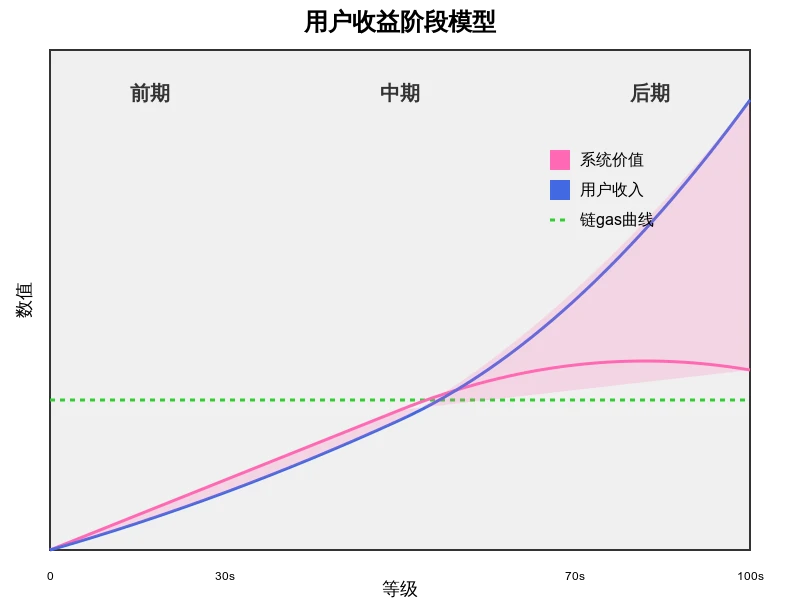
Since game recharge is the core step of the games positive feedback, the delay of game recharge caused by the gas burden has greatly damaged the games ability to acquire customers. However, since blockchain games need to bear the traditional on-chain obligations, even on layer 2, gas still mercilessly precedes the first recharge of the games native token. Therefore, Web3 does not have a true play first, then pay gaming experience.
Game item trading is considered to be the most attractive part of blockchain games in the middle and late stages. High-value game items obtained through krypton gold or long-term interactive efforts continue to appreciate in value after circulation and collection, which is an exciting experience for both game players and designers. However, as game derivatives, the premium brought by the circulation and trading of game items is mostly divided up by other on-chain products: the transaction fees of game NFTs may be divided up by NFT exchanges, and the trading of game tokens is divided up by DeFi. The value created by good games cannot effectively flow back into the game to support the game team.
The fluctuation of token value will lead to dynamically amplified in-game output. When the value of game tokens is underestimated, the game fee rate is low, and the game output and the actual game token investment are often positively correlated, resulting in low token prices. The cost of consuming the same game token is low, and the output is higher. When the game currency is high, the excessively high value of game tokens hinders the impulse to consume in the game. This amplification effect makes the fluctuation of the value of game tokens affected by both off-site and on-site output, increasing the challenges related to token economics design.
App As A rollup + zkVM: A possible way out
When listing this series of challenges, we unexpectedly discovered that the Application As Rollup architecture can appropriately and effectively alleviate related problems.
First of all, the actual gas of the self-owned rollup will be significantly reduced to 1/20 or even less than that of the full-chain game. This allows the project party to completely avoid gas fee interference in the early stage of the game, provide a truly free to play gaming experience, and create a better environment for the initial cold start of the game.
Secondly, Application As Rollup can provide a one-click lending platform, which encourages users to try paid features in the game by using USDC to borrow game tokens in the early stages of the game. Since the expected positive output of the game is often greater than the consumption, users can redeem the USDC collateral used for the original loan after the output exceeds the consumption.
In the circulation link, Application As a Rollup can effectively serve as a cross-chain bridge for game assets. When we need to transfer assets on different chains, we only need to deposit them into the game and then withdraw them from another chain. This native cross-chain function allows part of the value of game derivative transactions to be captured by the game itself.
Even more radically, games can provide a deposit stablecoin function for lending, so that the TVL value that could only be captured by the chain before can now be captured by the game itself. Finally, Application Rollup can provide a mechanism similar to gas fees for krypton gold players in the game, and ultimately capture the traditional chain gas fees. A more likely design of this mechanism is that the gas fee is lower when the token value is higher, and the gas fee is higher when the token value is lower: its essence is to benefit from the independence of layer 3 to bind the gas value and token value to alleviate the volatility of token value.
Of course, all this will not happen overnight. Delphinus Lab zkWASM, as an early player in pushing zkVM into gaming applications, recently released zkWASM Mini Rollup. This is a toolkit for rapid development and deployment of ZK Rollup applications. It allows developers to write Rust code, compile it to WebAssembly, and then run it in a Node.js environment. This SDK processes transactions, generates zero-knowledge proofs, and interacts with the blockchain.
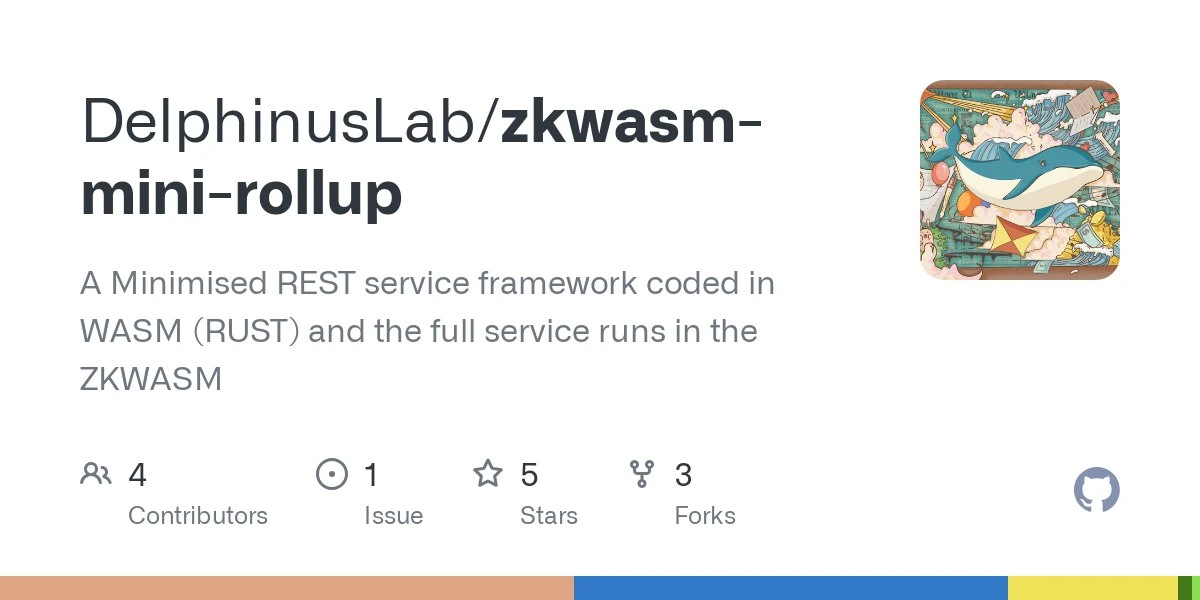
The core process is: receiving transactions, processing transactions in the WASM virtual machine, generating proofs using the zkWASM cloud service, and finally submitting the proofs to the blockchain for verification and settlement. The whole process ensures the privacy and security of transactions, while greatly improving the scalability of the blockchain. Developers only need to focus on the application logic without having to deeply understand the complex technical details of zero-knowledge proofs. It also includes a Rollup monitoring system that can use proofs and transaction data to trigger on-chain settlements, and verify proofs by storing Merkle roots and verify APIs to ensure settlement in the order of the Merkle roots on the chain. In addition, the SDK also simplifies the construction of the local development environment. You only need to start MongoDB and Redis, run dbservice, and then execute npm run server in the ts directory to start the complete local service.
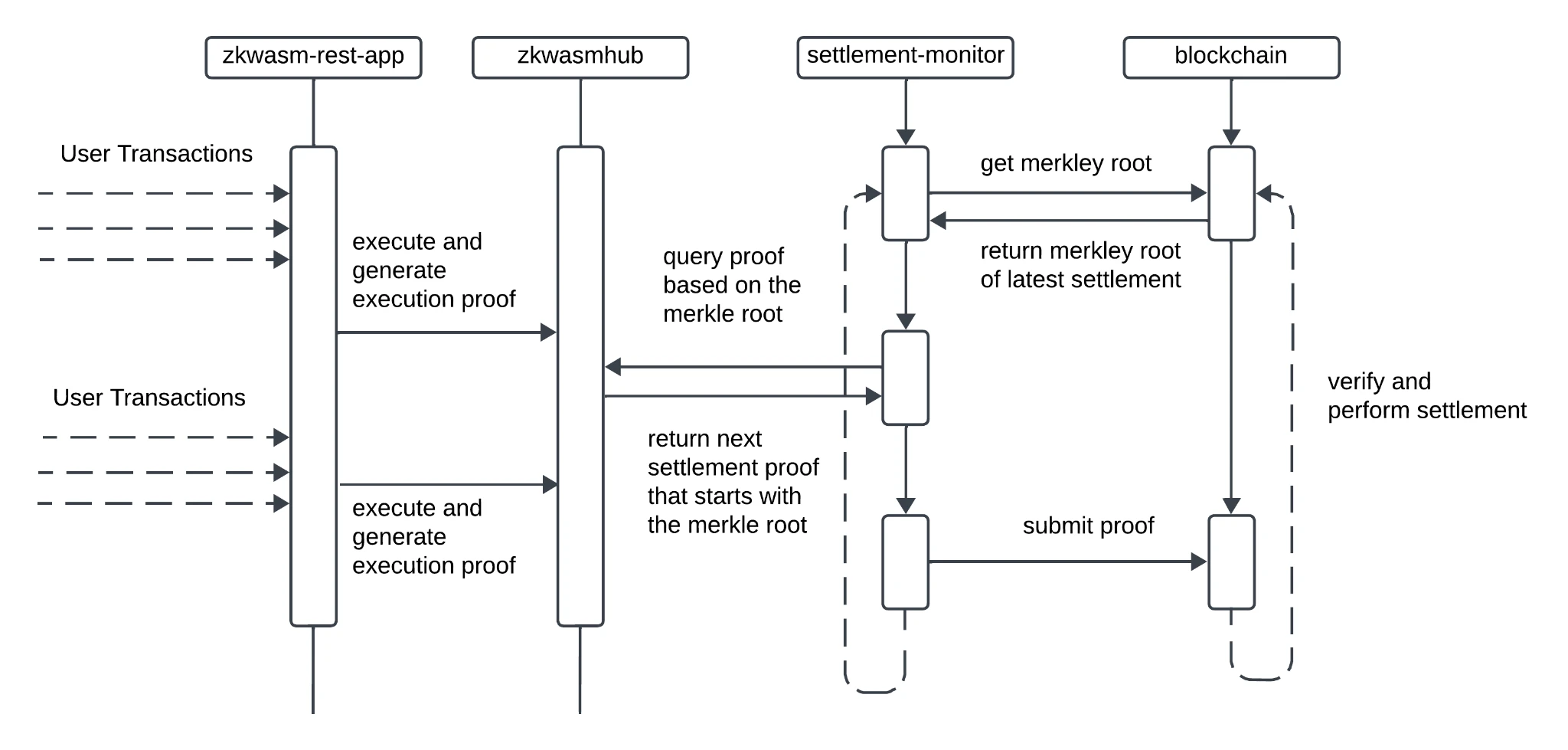
The emergence of zkWASM Mini Rollup SDK provides a highly promising solution to the dual challenges faced by Web3 games. Through the Application As A Rollup architecture, it not only simplifies the update process of game content, but also provides new possibilities for the optimization of game economic models.
This innovative approach firstly takes advantage of the compatibility of WASM, allowing a large number of traditional developers to use their most familiar programming languages, such as Rust, to write game codes; secondly, it allows game developers to more easily implement data reuse and logic upgrades, greatly reducing gas fees, and even potentially achieving a true 0 gas free play and play first, then pay experience. At the same time, it provides game projects with more opportunities to capture value, including cross-chain asset transfers, lending functions, etc., which helps to build a more sustainable game economy system.
Using zkWASM to issue a rollup with one click means that we can take a solid step towards mass adoption on both the developer and user sides. Although this technology is still in its early stages, Web3 games are also facing double distrust from both inside and outside the circle during this cycle, and are struggling to move forward amid doubts, but it points out a way to solve the core problems currently facing Web3 games.
As more game developers adopt this technology, and more and more game operators and lending protocols are willing to participate in the economic model proposed above, we have reason to believe that Web3 games will gradually overcome the current difficulties. We do not expect to have our own Black Myth Wukong or Call of Duty, but by doing the difficult and right things, working hard towards the ultimate goal instead of taking shortcuts, Web3 games will eventually usher in their own moment of facing destiny and leading the entire industry through the long eve of large-scale applications.










